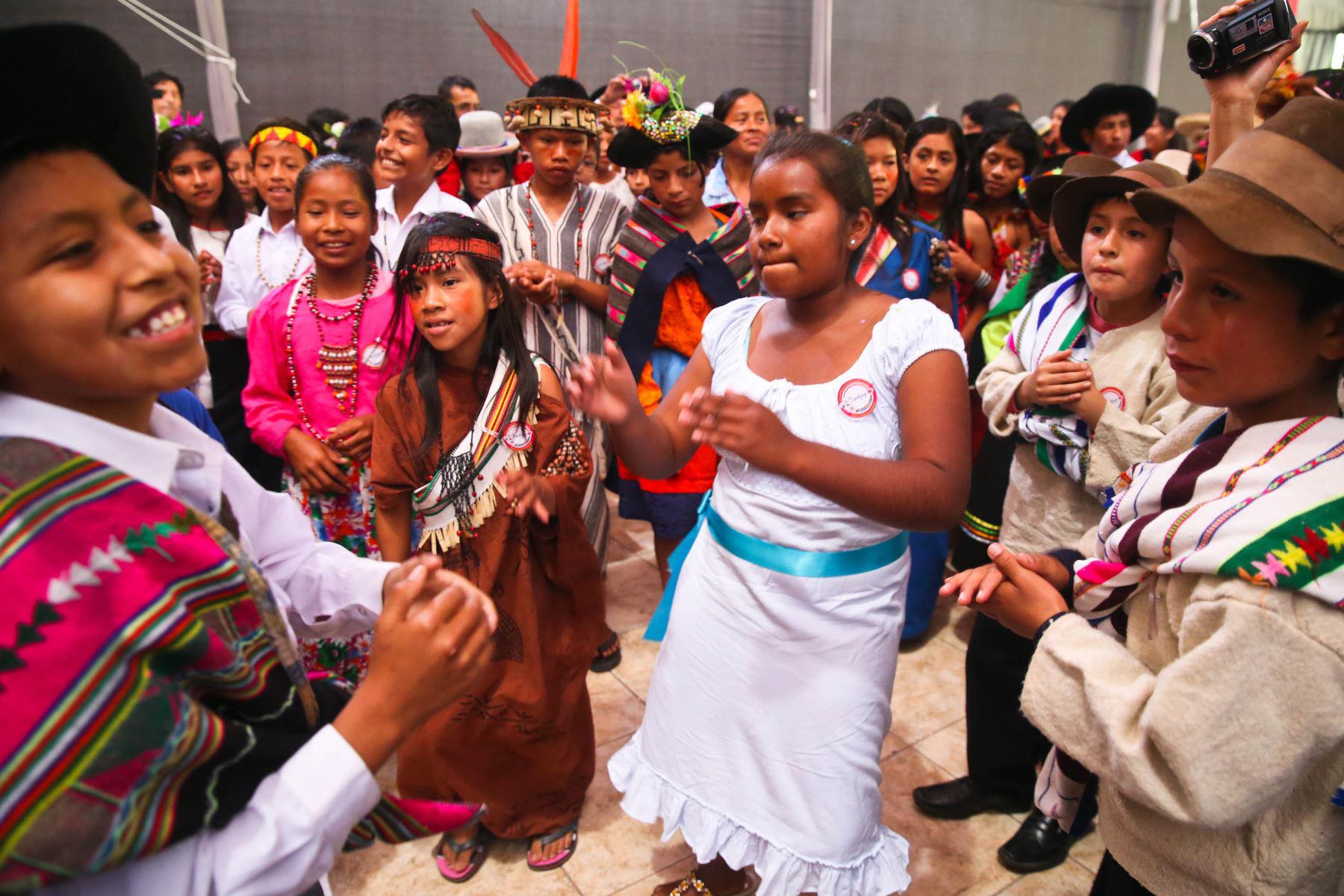
4 minute read
Foto: Andina
from Cumanana XXVII-ENG
by PeruEnAfrica
in Peru would focus on the linguistic differences found in indigenous populations as the main axis. For this reason, again, they left the Afro-descendant population out of government plans, since all their descendants already spoke Spanish.
In this process, a historically invisible condition has been perpetuated in the Afro-descendant population. They lost the right to recover their memories, cultural and linguistic demonstrations.
Advertisement
De La Cadena (2000) highlights that in Peruvian society a definition of race is perpetuated based on the historical subordination of phenotype and culture as a marker that would differentiate populations. In that sense, discriminatory practices in the social and institutional spheres would not be considered openly racist, protected by the hereditary differences of indigenous populations and Afro descendants. One of the obvious signs of the invisible position that the Afro-Peruvian population would have been that it has not been considered in the national census data either. The last official and national data until the elaboration of the present investigation was in the Census of 1940, in which various discussions have been triggered on the need to collect the data of ethnic origin, sheltering in the discourses of "egalitarianism" expressed in the famous Peruvian phrase "who does not have of inga, has of mandinga". This situation highlights the null existence of anyone purely indigenous or Afro
Reyna, 2006). Why is the intercultural educational approach necessary for the Afro-Peruvian population? Even though, in recent decades, there has been a renaissance and revaluation of the indigenous and the Afro-Peruvian, and the cultural contribution to our country has increased, discriminatory practices based on "race" continue to be carried out.
To show these events, it is enough to resort to the demographic and historical characteristics of Peruvian society. Peredo Beltrán (2001), in a synthesis carried out through research with Afro-Peruvian organizations and international institutions, summarizes that Peru has a population of more than 27 million inhabitants, of which it is considered that, by descent, 40% are mestizos, 30% indigenous, 10% African, 10% European, 8% Asian, and 2% Israelites / Arabs and others. In addition, it is estimated that about 50 languages are used in the country; Among them, 44 indigenous languages, various dialects of Chinese, Japanese, Italian, Arabic, Hebrew, and other foreign languages, in addition to Castilian and Spanish. There are up to 85 languages spoken in Peru. https://centroderecursos.cultura.pe/sites/default/files/rb/pdf/Encuentro-de-investigadores-2018.pdf
As mentioned above, the characteristic policy of the Peruvian State has looked to homogenize the entire population under a mestizo or Creole identity. In this way, it camouflages the social inequalities and signs of racism constantly denounced by indigenous and Afro-Peruvian populations. Given this constant, the intercultural approach, unlike what the Peruvian State looks for, would search to emphasize the value of cultural diversity as a source of national wealth, promotes tolerance, diversity, and cultural equality in national society.
The greater the diversity, the greater the wealth. It is necessary that the State and society recognize and positively assume Peru as a multicultural country and that they choose to strengthen and spread the principles that allow peaceful coexistence, development with equal opportunities, respect, and positive assumption of cultural diversity (National Policy on Languages and Cultures in Education, 2002: 3).
The Afro-Peruvian and indigenous movements prove, through their organizations, the relevance of the intercultural educational approach for their populations. Therefore, in the Declaration of Pachacamac (2001), they constantly denounced the negligence of the State for not properly including the participation of both movements in the planning and implementation of educational measures. Likewise, they denounce the distorted way in which it is being carried out, since, instead of integrating the populations respecting their diversity, it looks to assimilate them and, again, homogenize the entire population.
The intercultural educational approach would also promote the rewriting of Peruvian history including the voices of the diversity of populations that constitute it. For Valdiviezo & Valdiviezo (2008), an intercultural history would stimulate the appreciation of cultural diversity and mutual recognition among all populations. In this way, historical images that perpetuate cultural oppression and discrimination are corrected, in addition to redefining the belief that citizens have about their present and future.
The Afro-Peruvian population needs to know its legacy, it needs to reinforce the feeling of social, cultural and historical pride forged by its ancestors such as, for example, the loyalty of Don Antonio Oblitas, the academic eminence of Don José Manuel Valdés, the patriotism of Don Alberto Medina Cecilia, the artistic exquisiteness of Don José Gil de Castro, the heroism of Doña Catalina Buendía de Pecho and the hidden identity of the martyr Micaela Bastidas (DIGEIBIR, 2012). The characters mentioned are a sample of participation beyond the slave stage of the country. However, Afro-Peruvian adolescents and children are unaware of them.
Since the colonial period, the Afro-Peruvian population has been eliminated from history in schools, their struggles and contributions have been displaced from the Peruvian collective memory and have not received help from any kind of reparation. In this sense, the intercultural education approach is a fundamental tool to mark the beginning of a multicultural, multiracial, multiethnic, and multilingual Peru.

*Piece extracted from the article Intercultural Education for the construction of identity in young Afro-descendants, originally published in AFRO-PERUVIAN CULTURE: MEETING OF RESEARCHERS 2018, Ministry of Culture, 2019, Pp. 62-64.
Githeri
(Kenyan corn and bean stew)

Ingredients
1 tablespoon oil or butter
1 medium onion, chopped
3 garlic cloves, chopped
1 tablespoon curry powder
1 large bunch kale or other vegetables, chopped
4 cups diced tomatoes
2 cups corn
2 cups cooked beans of any kind, (canned and drained or cooked)
1 teaspoon salt
1/2 teaspoon pepper
1 lemon

Preparation
In a medium skillet, heat the oil. Sauté the onion for 3 minutes, until transparent. Add the garlic and curry powder and cook for 1 minute.
Combine all ingredients except lemon juice. Stir. Bring everything to a boil, then cover at once, reduce cooking over low heat and cook for 20 minutes, until onions and vegetables are well cooked.
Season with more salt and pepper to taste. Cut the lemon in half. Serve in bowls with a splash of lemon juice.



